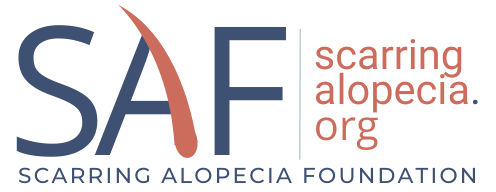Cetirizine for Hair Loss?
Article Summary by Soneet Dhillon, MS | MD Candidate | Chicago Medical School
What is Cetirizine? Cetirizine (Zyrtec ®) is an oral antihistamine available over the counter, which is typically used to relieve allergy symptoms such as watery eyes, runny nose, sneezing, and itching. Historically, cetirizine has only been used orally to relieve allergic responses. However, more recently, topical cetirizine has been investigated as a potential agent to treat hair loss1.
Cetirizine by mechanism is an anti-inflammatory medication. Specifically, it targets the histamine 1 receptor (H1R) to prevent immune cells from moving into areas of inflammation, as well as preventing the dilation of local blood vessels. Cetirizine also leads to a reduction in prostaglandins that have been well documented in the hair loss pathway, as well as inflammation cascade. By using cetirizine to block these pathways, inflammatory symptoms such as itching, redness, warmth, etc. can be reduced.
Furthermore, motivated by the success of hair growth in other prostaglandin pathway medications such as bimatoprost 0.03% solution, researchers studied the use of topical cetirizine in patients with androgenetic alopecia (non-scarring hair loss) and found that it increased hair density and hair diameters1,2.
So, then the question becomes, is oral cetirizine the same as topical cetirizine? While the oral form may have a better bioavailability in the body, side effects, especially in higher doses, have been well-documented. Those are generally not significant, and common side effects include drowsiness and fatigue, etc.
Of note, oral/topical cetirizine has been less intensively studied in scarring alopecia, but several research studies support the use of cetirizine in scarring alopecia. We will cover this topic in SAF webpage and social media next month and share its potential role in scarring hair loss below.
Typically, topical corticosteroids are used to alleviate inflammation and symptoms from scarring alopecia. By taking (in many cases with topical steroid), patients may experience a reduction in symptoms and potentially a decrease in the severity of inflammatory attacks. A recent clinical trial investigated treating alopecia areata (non-scarring, but inflammatory hair loss) patients with a combination of topical corticosteroids and superficial cryotherapy (reatment with cold liquid nitrogen gas to treat skin conditions), with and without antihistamine therapy3. The group treated with a combination of antihistamines, corticosteroids, and cryotherapy experienced significantly more hair growth (major hair regrowth and complete hair regrowth) than the group treated with cryotherapy and steroids alone3.
Bottom line, cetirizine is still being investigated and there are limited studies on the use and success of cetirizine. Patients should speak to their dermatologists before starting regular use. In addition, patients can speak to their health care team about considering topical cetirizine treatment options. We look forward to reviewing current data of oral cetirizine in scarring hair loss in a future article.
Read full articles #1, #2, and #3.
References: (1) Hossein Mostafa D, Samadi A, Niknam S, Nasrollahi SA, Guishard A, Firooz A. Efficacy of Cetirizine 1% Versus Minoxidil 5% Topical Solution in the Treatment of Male Alopecia: A Randomized, Single-blind Controlled Study. J Pharm Pharm Sci 2021;24:191-9 doi 10.18433/jpps31456. (2) Rossi A, Campo D, Fortuna MC, Garelli V, Pranteda G, De Vita G, et al. A preliminary study on topical cetirizine in the therapeutic management of androgenetic alopecia. J Dermatolog Treat 2018;29(2):149-51 doi 10.1080/09546634.2017.1341610. (3) Lee YB, Lee WS. Efficacy of antihistamines in combination with topical corticosteroid and superficial cryotherapy for treatment of alopecia areata: A retrospective cohort study. J Am Acad Dermatol 2021;84(4):1152-4 doi 10.1016/j.jaad.2020.06.1026.
